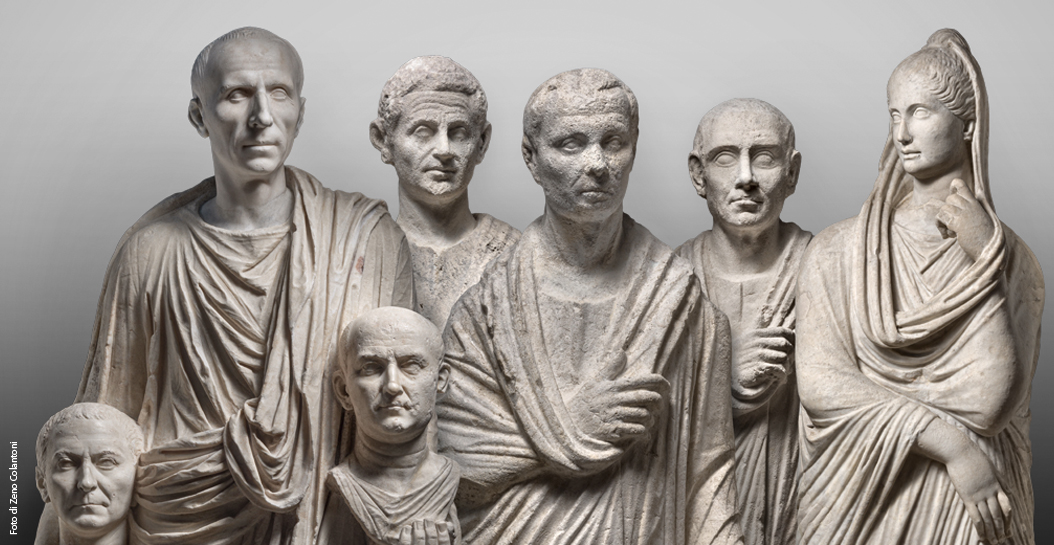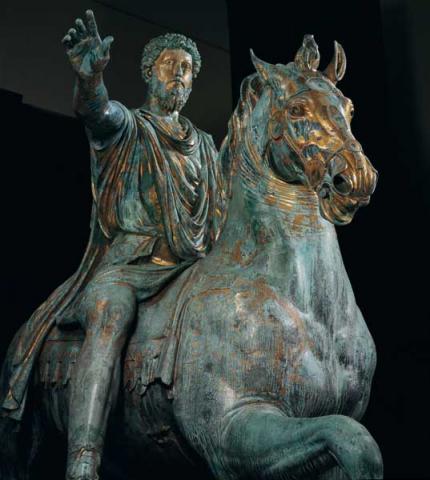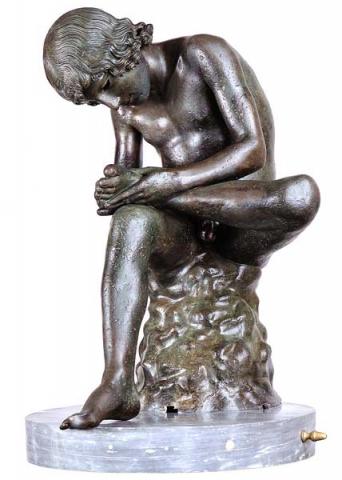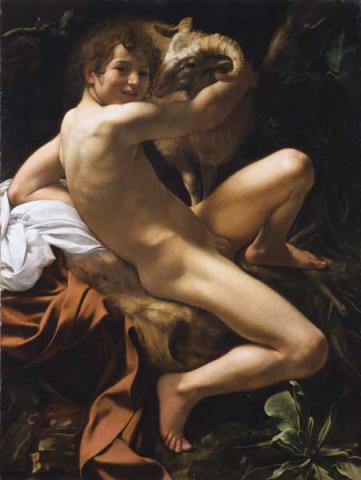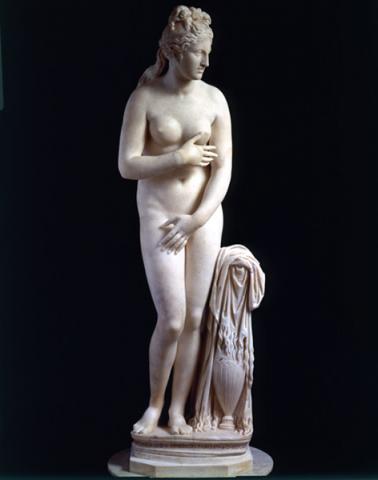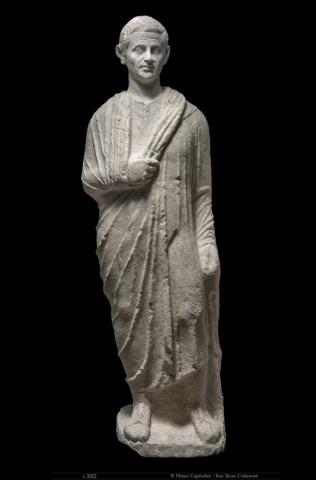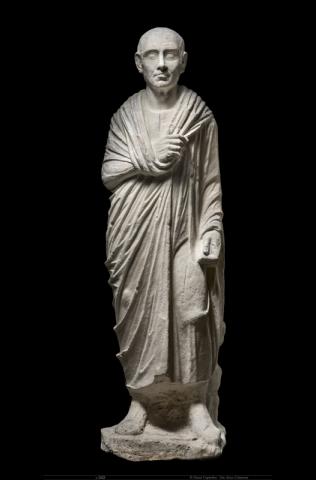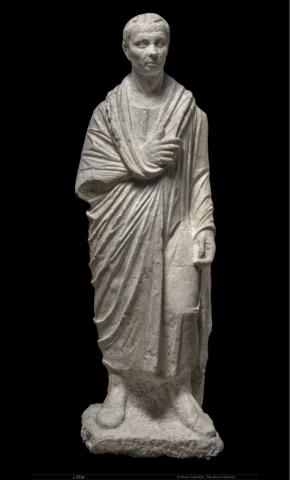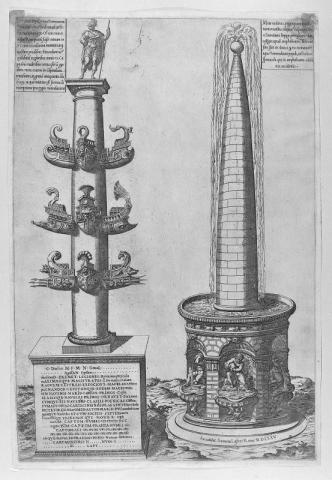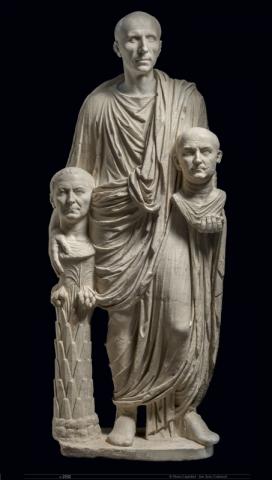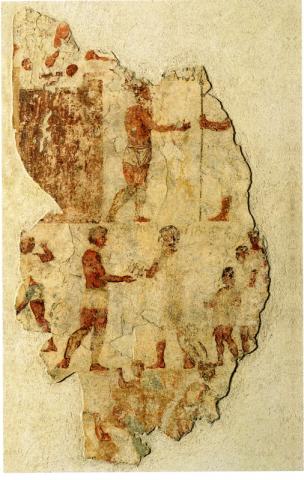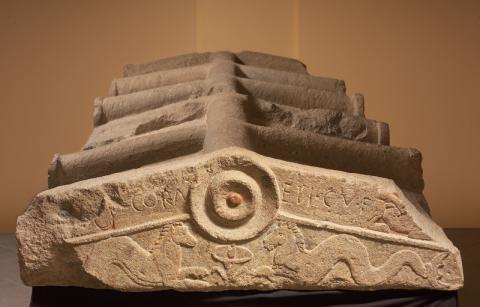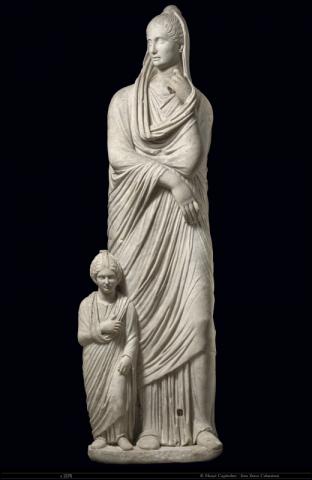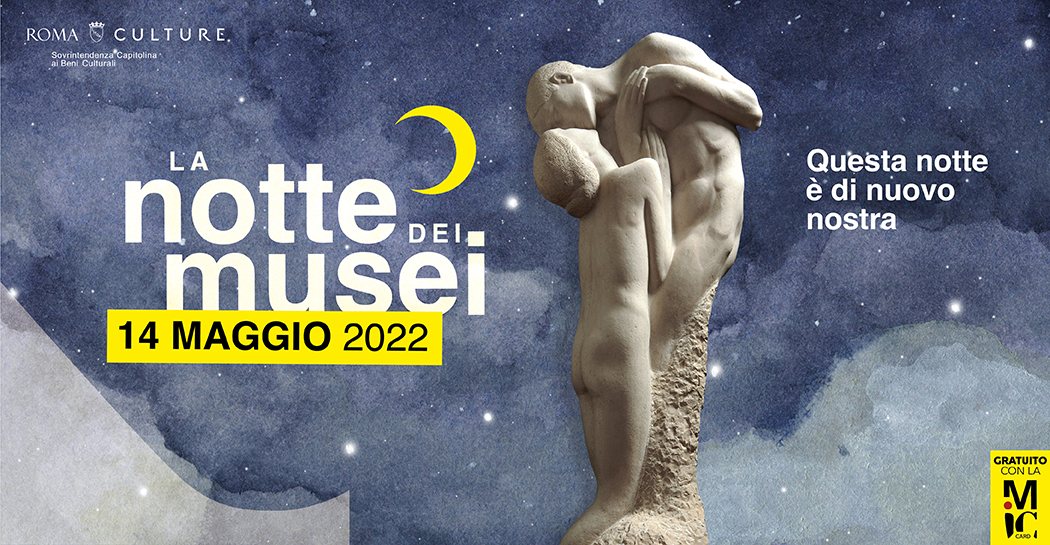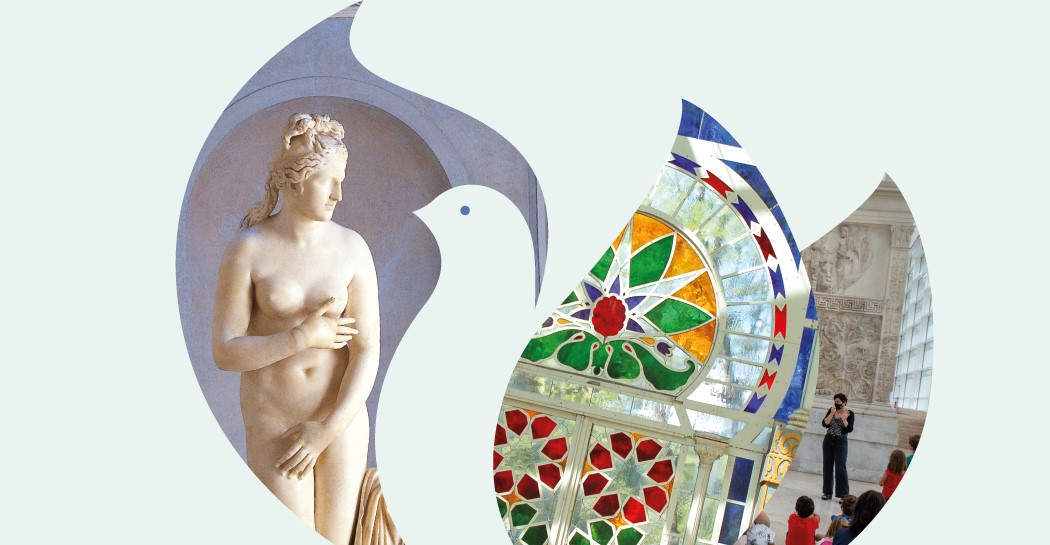Cursus Honorum. The government of Rome before Caesar
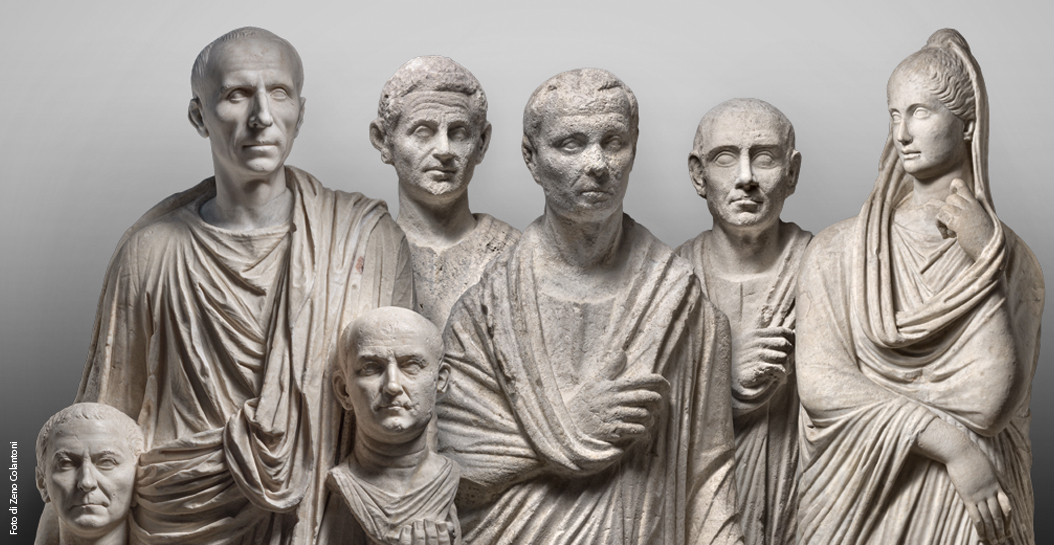
Four male and one female voice perform the republican period and reveal the nature of the political activities of the ancient Roman Republic.
Part of the project La Roma della Repubblica. Il racconto dell'Archeologia, the exhibition is dedicated at the public charges of the members of the republican age, the cursus honorum, a basic part of the political life in the ancient Rome.
The main characters in this tale are five anonymous figures portrayed by the five statues that provide an exceptional storytelling experience: four of them are male figures, with the addition of a different voice, a female figure, representing a reality that is usually not present in a society dominated by the men. Their role is to introduce the public to the monuments with historical and symbolic importance that celebrate the great war achievements, with others that describe the roles related to the administration of the city and the construction of the political importance of the people and their families.
Thanks to these unusual guide-books, at the visitors will be reminded about war and conquests that were important moments in the history of the Roman Empire's development: the first naval victory over Carthage in Milazzo's sea, remembered by the Colonna Rostrata erected in honour of the consul Gaius Duilius.
This event and others are portrayed by three travertine portrait statuae from the middle 1st century B.C., already in Villa Celimontana, wearing the pallium, the robe that was used to be placed over the tunica.
The ius imaginum, the right to conserve in the house the portraits of their ancestors to be exhibited during funerals and on special public events, at the first exclusive to the aristocracy and extended in the 4th century B.C. also at the common people when they had access to the government offices, is instead narrated by the famous "Togato Barberini" (from the name of the collection it comes from). The majestic marble statue, dating back to the first quarter of the 1st century A.D., provides some unique evidence of the system that families holding the power implemented, using the celebrity and the reputation of their ancestors.
The figura femminile voice, which is part of a Gruppo funerario con fanciulla made from marble from Lunigiana and dating from around the middle of the first century B.C., provides the introduction to the funeral monuments, in particular the sarcophagi from the sepolcro della gens Cornelia, a very unusual archaeological example of an ancient republican tomb. The exhibition, on the roads leaving out of Rome, of the architectural features and paintings of the family tombs was another element in displaying the power that had been obtained.
The exhibition also shows the characteristics of Roman courts: a collective government for a limited period of time, mainly for one year. The higher magistrates – consuls, praetors, censors – were elected by the citizens divided according to census, gathered in the centuriate committees and distinguished by special attributes such as the curule chair, the fasces (representing the power of life and death over the Roman condemned) and a special edged toga. They were the only ones who were allowed to celebrate the triumph.
The minor magistrates – quaestors, aediles – were elected by the citizens divided into tribes, gathered in tribal assembly. A law in the 2nd century B.C. established the order for the succession in the offices, also specifying the minimum age of the candidates and the time that had to be spent between one magistrate and the next. The stages, in ascending order, were: questura, tribune of the people, aediles, praetor, consul and censor, and in addition the temporary and exceptional administration of the dictatorship.
When the Republic was established, the powers, before concentrated in the figure of the king, had been distributed between the pontifex maximus, with the main religious responsibilities, and the consuls, who were two magistrates with civil powers and military command.
Access to the cursus honorum required, in addition to a minimum census, the reputation of their ancestors: all those not belonging to a select group of illustrious families were "new men". The rules for access to the courts and the organization of positions modified in the course of time: access to the main courts (consulate), at first limited to members of noble families, was then extended to the common people in the 4th century B.C. As the power of Rome increased, other elective magistrates' courts were established with limited powers.
The display includes pieces that are part of the Capitoline collections, some of them from the permanent exhibition at the Centrale Montemartini, and some not usually on display. This was – following a policy adopted by the Musei Capitolini and the Archaeological Museums Department to organise exhibitions based with material from its own collections – a new chance to continue with conservation, restoration and valorisation activities of the very rich heritage that needs to be made increasingly accessible to the public.
It is within this context that an attractive multimedia display has been set up, aimed at bringing visitors closer to complex subjects and particular monuments, such as epigraphic documents, which are very important direct historical sources that are not immediately readable. Finally, the exhibition is an ideal link between the video installation Caesar's heritage and the conquest of time, who can be seen in the Sala della Lupa e dei Fasti Antichi in the Palazzo dei Conservatori, and the exhibition Roma della Repubblica. Il racconto dell'Archeologia, soon to be held at the Capitoline Museums, Palazzo Caffarelli.
Information
From March 24 to October 2, 2022
Every day 9.30 - 19.30
Last admission one hour before closing time
Closed: 1 May and 25 December
Before planning the visit, CONSULT THE NOTICES
Access to the exhibition is granted to holders of a ticket according to the current rates
Free admission with MIC card
Call. 060608 (every day 9.00 - 19.00)
The exhibition project is promoted by
Roma Culture - Sovrintendenza Capitolina ai Beni Culturali
Organized by
Zètema Progetto Cultura
Press Room
Gallery
Eventi correlati
1010610
